Summary of Climate Disasters on the Planet from September 4 to September 10, 2024
Nigeria
Heavy rains continue to flood northeastern Nigeria. On September 10, they led to the destruction of the Alau Dam, located 10 km (6 miles) from the city of Maiduguri in Borno State, resulting in a catastrophic flood affecting one million people.
Water rushed into Maiduguri overnight, trapping many people who woke up in flooded homes. According to a representative from the National Emergency Management Agency (NEMA),
70% of the city was underwater!

Aftermath of the catastrophic flood, Borno State, Nigeria
At least 30 people died, and people are still searching for missing relatives.
As of September 11, 400,000 people were forced to leave their homes.
The situation is critical: water has washed away cemeteries, landfills, and sewage systems.
More than 80% of the animals in the city's largest zoo died from the flood. Some, like ostriches, snakes, and crocodiles, ended up on the streets.
Morocco
Extreme rains and thunderstorms have hit southern Morocco since September 6, causing catastrophic flooding. The disaster claimed 18 lives, and four people are missing.
A representative from Morocco's General Directorate of Meteorology called this event “exceptional.” And it's clear why: in the city of Tagounite, usually an arid and desert region, 170 mm (6.7 inches) of rain fell in just one day.
This is more than 50 times the monthly average!
In September, this region typically receives only about 3 mm (0.12 inches) of rain.
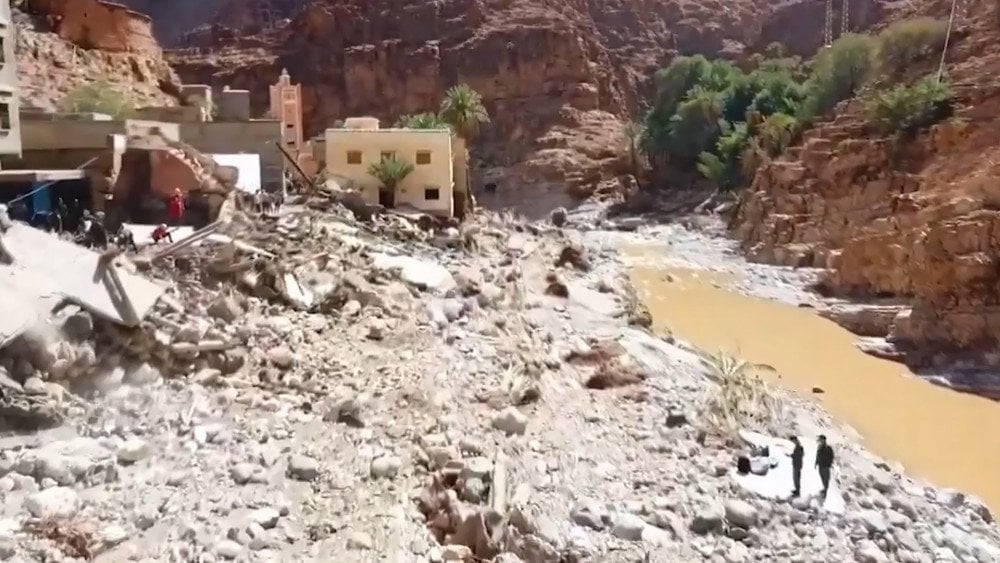
Flash flood washed away houses and destroyed roads, Morocco
The worst damage was suffered by the provinces of Tata, Tiznit, and Errachidia. Floodwaters swept away at least 56 houses and destroyed 110 roads, paralyzing vital transport routes. People were left without drinking water, electricity, and communication. The flood killed a large number of animals.
Algeria
The southwestern part of Algeria also experienced severe flooding. In just a few days, the Algerian Sahara received an unprecedented amount of rainfall for this time of year. The provinces of Béchar, Tamanrasset, El Oued, Ghardaïa, Djanet, Naâma, El Bayadh, Illizi, and Tindouf were affected. The floods claimed at least 5 lives, including children who were swept away by the torrential waters.

Raging waters sweep away everything in their path, Algeria
Flooding in the valleys damaged national road networks: National Road No. 6, connecting the southwest with the northwest, and National Road No. 110, between Béchar and Taghit. Businesses, schools, government offices, and homes were inundated. Due to the rapid rise of water, many families found themselves trapped. Fortunately, most were rescued.
USA
California in the USA is engulfed in wildfires! The largest one, the Line Fire, erupted on August 5 in San Bernardino County and grew more than 14 times in size within 30 hours. A state of emergency was declared in San Bernardino County.
Temperatures reaching up to 40.6°C (105°F), critically dry vegetation, and winds contributed to the rapid spread of the fire.
By September 9, the flames had covered more than 8,000 hectares (19,768 acres). By this time, the fire was only 3% contained.
According to Cal Fire, more than
38,000 residential and commercial buildings were at risk.
Evacuation orders were issued for 4,800 homes in San Bernardino County.
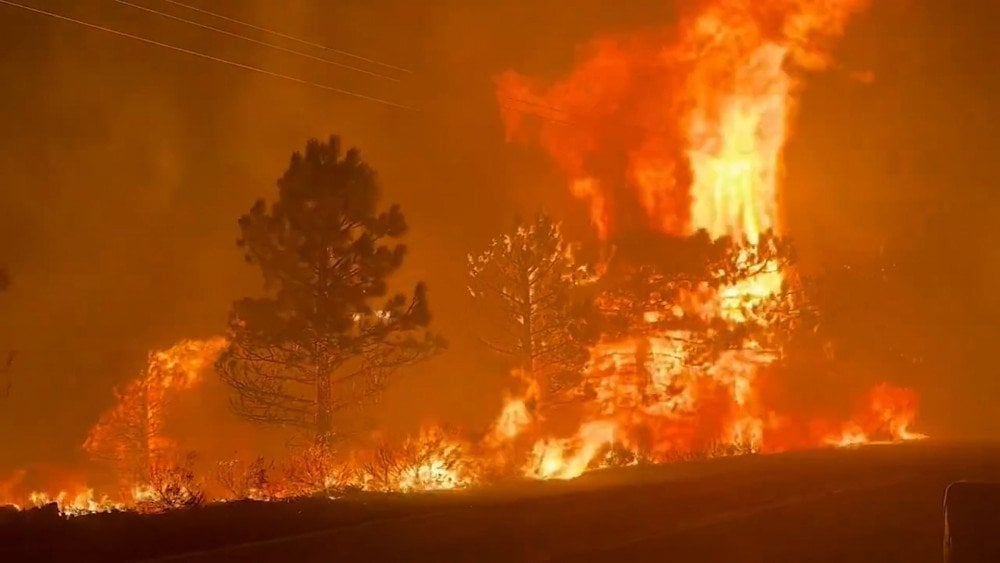
Massive Line Fire is rapidly expanding, California, USA
Smoke from the fires made the air around Los Angeles dangerous to health. According to Airnow.gov, outside the fire zone, in the city of East Highland, the air quality was “extremely unhealthy.”
Another fire in the state, the Bridge Fire, which broke out on September 8, expanded rapidly within two days, on September 10. In just a few hours, its size increased by 8.5 times (from 1,619 to 13,759 hectares [4,000 to 34,000 acres]).
As of the morning of September 11, the containment level of the Bridge Fire was 0%, indicating that the fire is spreading and currently remains uncontrollable.
The state of Nevada is also suffering from fierce wildfires. 14,000 people were evacuated, and more than 18,500 consumers were left without electricity due to the Davis Fire, which began spreading on September 7. Interstate 580 was closed due to the fire.
As of September 10, 71 large wildfires were burning simultaneously in the USA, covering a total area of 909,474 hectares (2.2 million acres).
Argentina
Severe wildfires have engulfed the province of Córdoba in Argentina. The government declared a state of emergency in four departments of Córdoba province: Calamuchita, Punilla, Colón, and Santa María.
In the mountainous area of El Durazno, in the Calamuchita Valley, 12,600 hectares (31,135 acres) of vegetation burned, and homes were damaged.
Due to abnormally high temperatures for this season, low humidity of around 30%, and strong winds of 60–70 km/h (37–43 mph) constantly changing direction, the situation was greatly complicated. Firefighters struggled with the blaze for several days.
Another fire broke out just a few kilometers from the city of Córdoba, the capital of the eponymous province. The fire started on September 5. In the city of La Calera, residents were forced to evacuate as
the fire was only 50 meters (164 feet) away from homes.
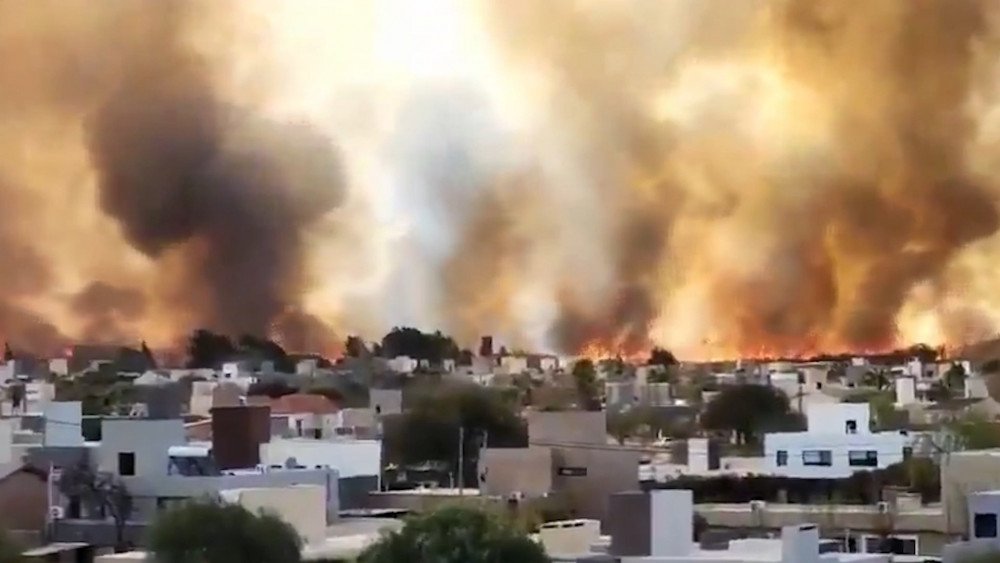
Fire approached residential homes at a dangerous distance, Córdoba province, Argentina
Due to heavy smoke, National Route 20 was closed. Four volunteer firefighters were hospitalized with injuries. In total, 700 people, several water-bombing planes, and helicopters were deployed to fight the fires.
Super Typhoon Yagi
Typhoon Yagi formed on September 1 off the eastern coast of the Philippines and
brought powerful rains, up to 400 mm (15.7 inches) of precipitation,
landslides, and large-scale floods across the country. In the Philippines, Typhoon Yagi was named Enteng. The disaster killed 20 people, and several others are missing.
More than 2 million people were affected.
More than 47,600 people were forced to leave their homes.
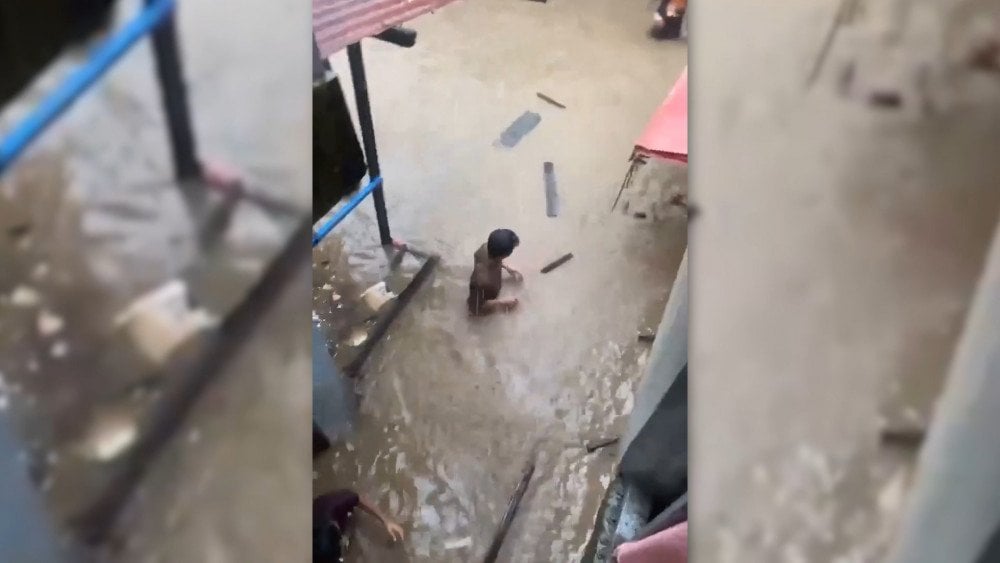
Typhoon Yagi caused devastating floods in the Philippines
On September 6, having already become a super typhoon, Yagi hit China with wind speeds of up to 245 km/h (152 mph). It made landfall twice: first in the city of Wenchang on Hainan Island, and then in the county of Xuwen in Zhanjiang, Guangdong Province.
The raging wind uprooted trees and shattered windows of residential and office buildings.
57,000 homes in Hainan Province were destroyed or damaged.
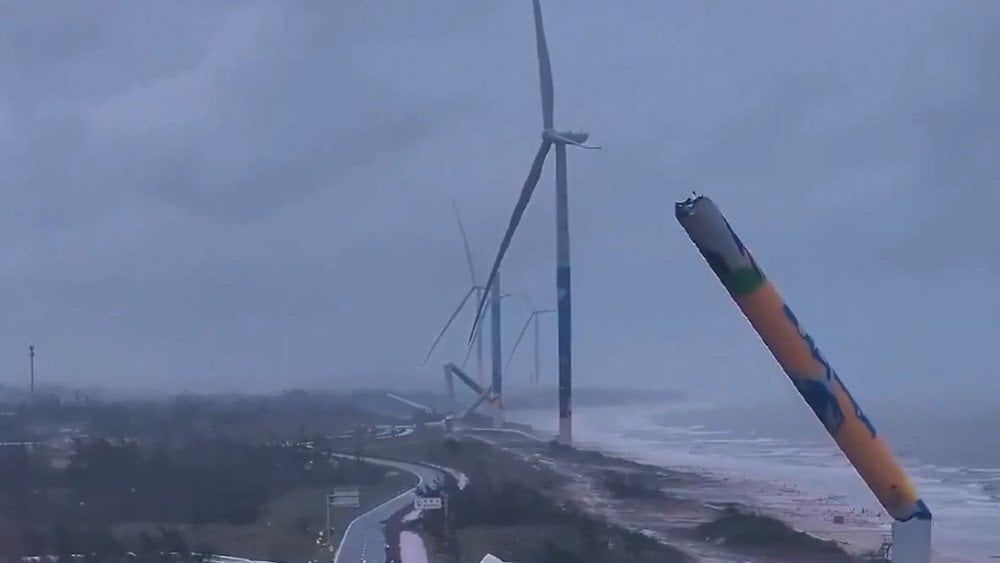
The powerful wind of Super Typhoon Yagi snapped wind turbines on China's coast like matchsticks
In Xuwen County, Guangdong Province, the typhoon overturned several vehicles, including an 18-ton truck. The powerful wind also demolished the entire second floor of a store, leaving only a few steel columns standing.
As of September 7, the disaster affected more than 1.2 million residents in China. Four people died, and 95 were injured.
Yagi became the strongest autumn typhoon in the country in the last 75 years.
Vietnam was the third and most affected country. Typhoon Yagi made landfall in northern Vietnam on September 7. According to Vietnam’s National Center for Hydro-Meteorological Forecasting, it hit the city of Haiphong and Quang Ninh Province
with wind speeds of 149 km/h (93 mph).
The coastal city of Haiphong, an industrial hub of Vietnam, was at the epicenter of the disaster.
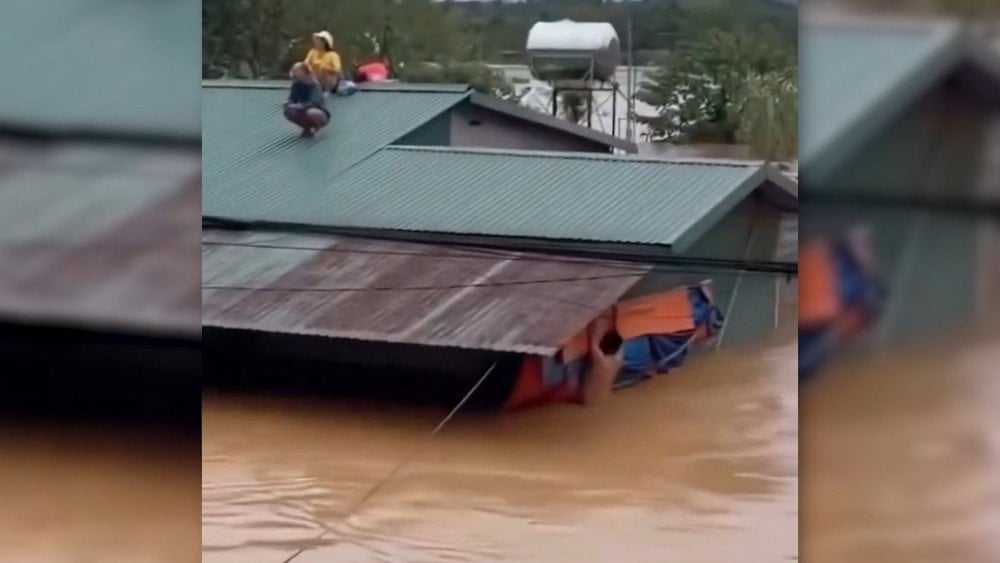
Destructive aftermath of Typhoon Yagi in Vietnam
Three-meter (10-foot) waves battered the coast, the wind left ruins where residential and industrial quarters once stood, and more than 10,000 homes were damaged. The north of the country was literally buried under fallen trees.
Due to the disaster,
25 ships sank in Quang Ninh Province.
On September 9, the busy Phong Chau Bridge in Phu Tho Province could not withstand the onslaught and
collapsed into the river along with cars.
Some people were pulled from the water, while others are still missing.

The Phong Chau Bridge collapsed with vehicles on it, Phu Tho Province, Vietnam
On the same day, a bus with 20 passengers was swept away by a landslide into a raging stream in Cao Bang Province.
According to the Vietnam News Agency (TTXVN), as of September 12, at least 199 people died, and 128 were missing, with hundreds injured due to the typhoon and the subsequent floods and landslides in Vietnam. Floods damaged 130,268 houses across the country.
Due to Typhoon Yagi, for the first time in Vietnam’s history, the highest, 4th level of disaster risk was declared in the Gulf of Tonkin.
The scale of destruction is linked not only to the strength of the wind but also to the unusually large outer radius of the typhoon. Moreover, Yagi remained powerful, at the level of a super typhoon, for an unusually long time — for almost 64 hours. It demonstrated how extreme tropical cyclones are becoming.
What is happening shows that natural anomalies are rapidly progressing. Rains fall where they shouldn't, flooding even deserts. Seasonal precipitation is turning into real natural disasters. Fires are spreading at catastrophic speeds, burning entire settlements. It has become difficult to control fires, and sometimes they cannot be extinguished at all.
The wheel of cataclysms is spinning at great speed. And there is no reason to believe it will stop on its own. In the coming years, the situation will only get worse. To address this issue, to develop and implement urgent extraordinary measures, international cooperation among the world's smartest scientists is needed.
The “Global Crisis” forums, created by volunteers and scientists, gather everything known about current global problems and possible solutions. By studying the latest forums and scientific materials, you can understand the full picture of what is happening. If you share this information on your social media, you will help create a trend and draw the attention of the media and politicians. Now is a unique moment when simple actions on social media can change the information landscape and set the main agenda — saving our lives. But this will happen when everyone realizes the importance of their contribution and approaches it responsibly.
The video version of this article can be viewed here:
Leave a comment